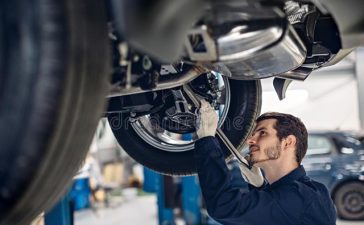Autonomous vehicles, also known as self-driving cars, have the potential to revolutionize urban planning in significant ways. As this technology continues to advance, it is crucial to understand the impact it will have on the design and infrastructure of our cities.
Reduction in Parking Spaces
One of the most significant impacts of autonomous vehicles on urban planning is the potential reduction in the need for parking spaces. With self-driving cars capable of dropping off passengers and then finding parking spaces on their own, the demand for parking lots and garages in city centers may decrease. This could free up valuable land for other purposes such as green spaces, affordable housing, or commercial developments.

Changes in Transportation Networks
Autonomous vehicles will also lead to changes in transportation networks within cities. With the ability to communicate with each other and with traffic infrastructure, self-driving cars can optimize routes, reduce congestion, and improve overall traffic flow. This may influence the need for traditional public transportation systems and impact the design of roads and intersections to accommodate autonomous vehicles.
Impact on Land Use and Zoning
The introduction of autonomous vehicles will likely impact land use and zoning regulations in urban areas. As the need for parking spaces diminishes and transportation patterns change, city planners may need to reconsider current zoning laws to adapt to the new mobility landscape. This could lead to mixed-use developments, pedestrian-friendly designs, and a shift towards more sustainable and efficient land use practices.
Challenges and Opportunities
While autonomous vehicles offer numerous benefits for urban planning, they also present challenges that need to be addressed. Issues such as data privacy, cybersecurity, equity in access to autonomous transportation, and the impact on the job market for drivers are all important considerations. City planners will need to work closely with policymakers, technology companies, and communities to navigate these challenges and seize the opportunities presented by autonomous vehicles.
In conclusion, the impact of autonomous vehicles on urban planning is profound and multifaceted. As self-driving cars become more prevalent on our roads, cities will need to adapt their infrastructure, policies, and regulations to accommodate this transformative technology. By embracing the opportunities and addressing the challenges, urban planners can leverage autonomous vehicles to create more sustainable, efficient, and livable cities for the future.
You Might Also Like
How AC Repairs Restore Comfort After a System Failure – Bringing Back Reliable Cooling After a Breakdown
A car without a working AC system can be very uncomfortable. When the cooling system fails, driving becomes stressful especially...
Exploring Luxury and Power with the Chevrolet Corvette Stingray
The Corvette Stingray mixes new ideas with what has made it great for years. It gives you a driving feel...
Stop Fuel Gelling Before It Starts With the Right Diesel Additive
If you’ve worked with diesel engines long enough, you know two things. One, cutting corners on fuel quality costs you...
Thermostat Troubles: The Small Part That Can Break Your Car’s AC
A working car AC makes every drive better. It keeps you cool on long sunny roads. It helps clear fog...










